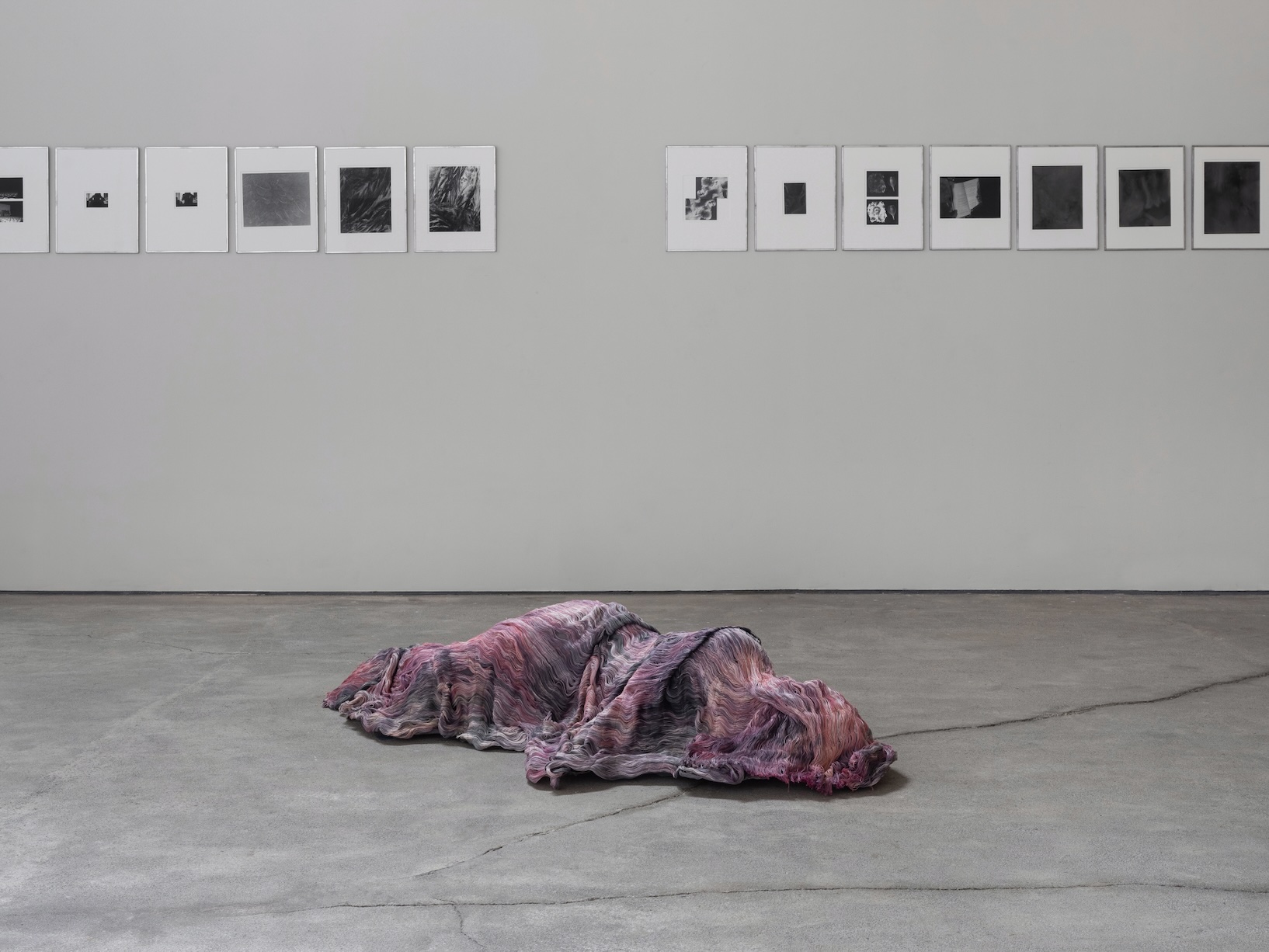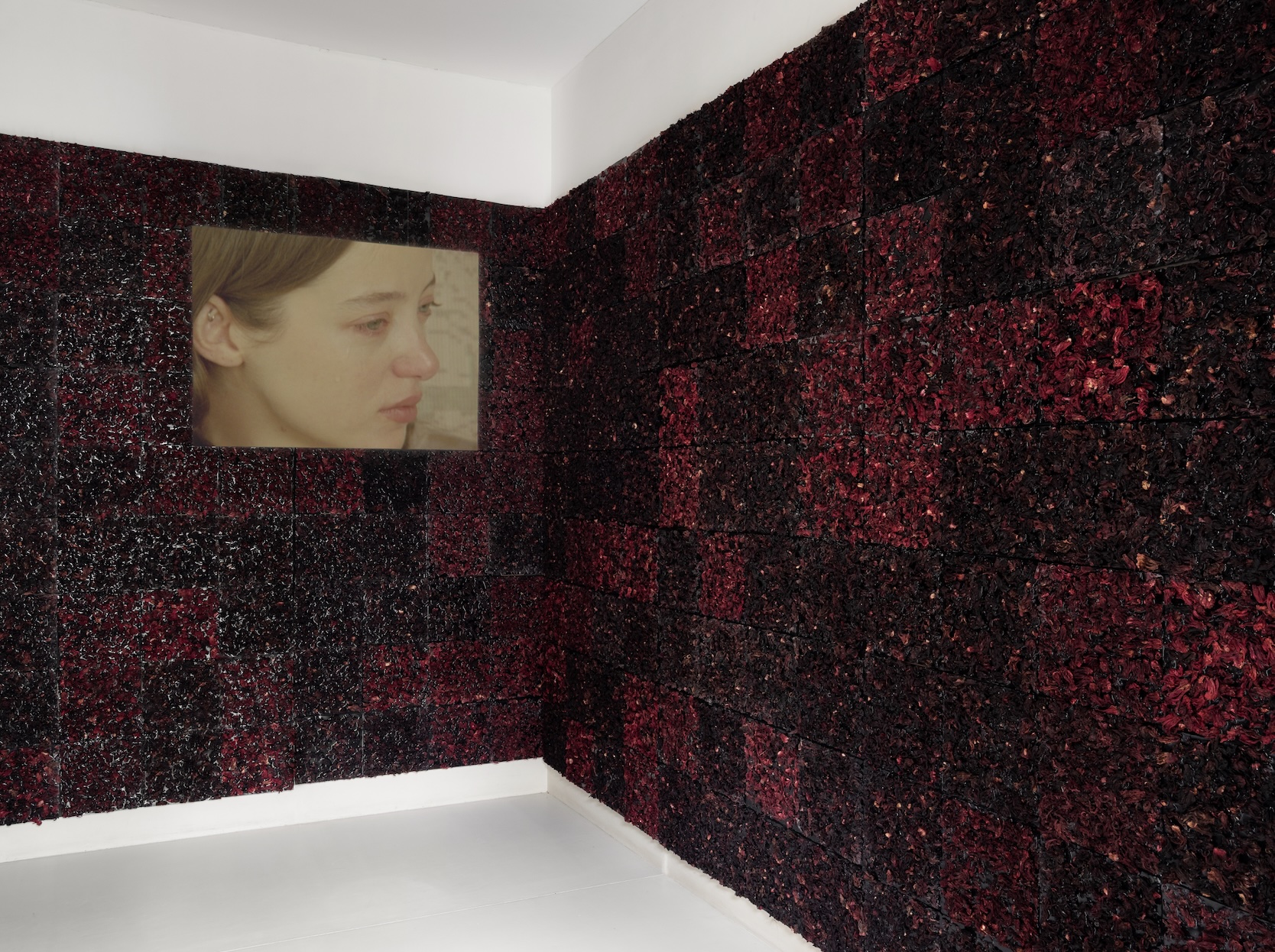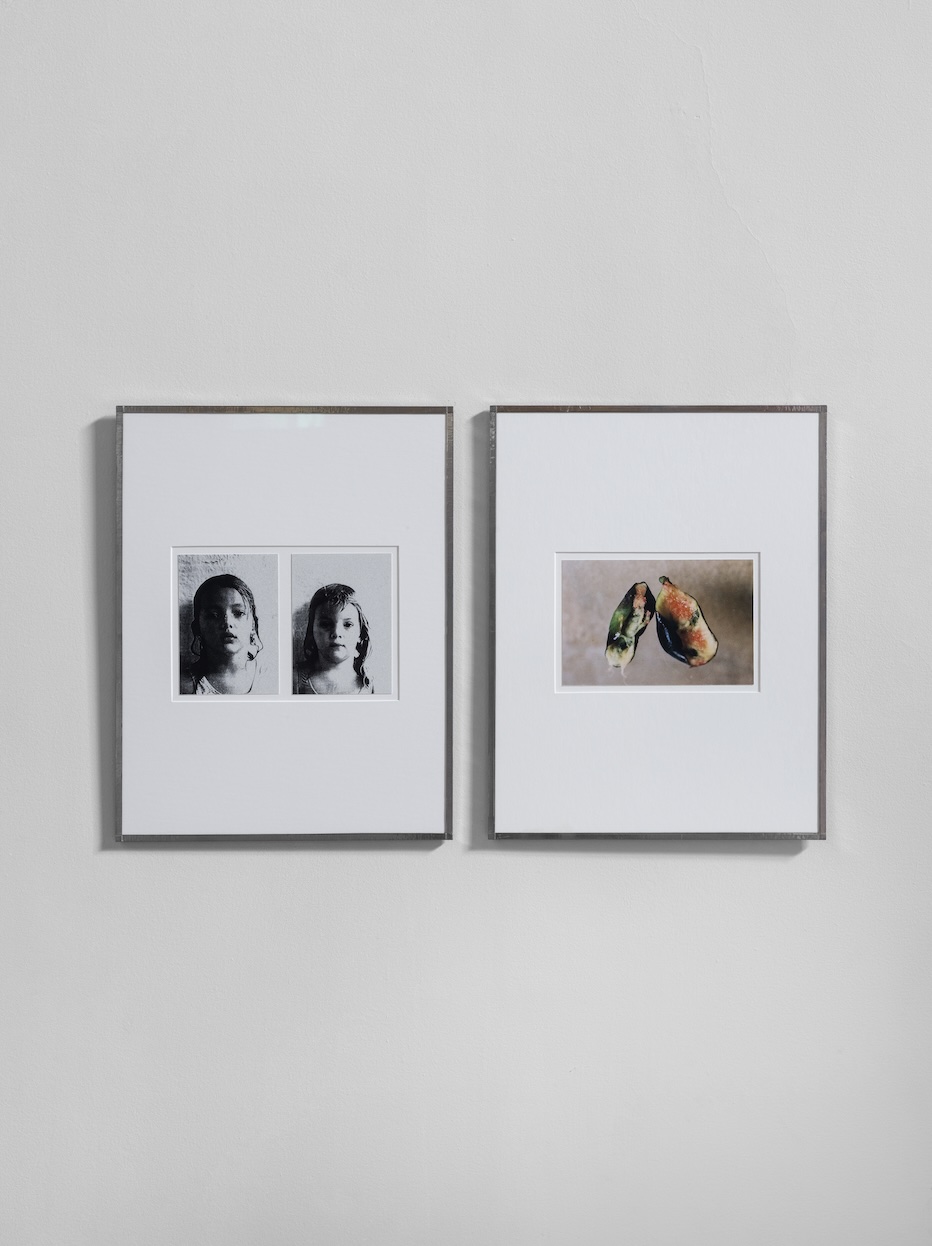
Review
Various reddish-scented salts. On El desierto de ella: Alicia, Chantal, Eunice by Manuela de Laborde at PEANA
by Bruno Enciso
Reading time
5 min
Artist Manuela de Laborde presents the exhibition El desierto de ella: Alicia, Chantal, Eunice at PEANA gallery, curated by Margaux Knight. This is an extremely heterogeneous body of work made up of wall pieces, installations, sculptures, and video. Beyond the materiality of each, a mixed tone—somewhere between literary and cinematic—quickly emerges. Three series of paintings, each hung at the same height in a simple horizontal line, offer a subtle conceptual framework that is parasitized by the rest of the works, which disrupt it with their plasticity. Each series corresponds to the presence of one of the three women who inspired this entire production: the Alice who explores Wonderland in Lewis Carroll’s novels, Belgian filmmaker Chantal Akerman, and Costa Rican/Mexican poet Eunice Odio.
This is an intriguing starting point: a polyphonic curatorial premise that seeks to loosen the rigidity of specific references and make room for three distinct gazes. In the series that invoke each woman, photographs of varied visualities mingle with drawings. There’s no need to have an in-depth knowledge of each of their universes, for the artist has distilled here the essence of her long dialogue with them—a selection of images closer to an altar than to the display of an archive. Guided by the remarkable curatorial text, we might say that the desert—always vast and enigmatic—is where the artist meets these three women to endure her own ingestions. She wanders, with no apparent horizon, as part of a transformative process that unsettles her innermost being and relentlessly redefines her relationship to the world. She is sensitive, savors her sorrows, and sutures her own skin when wounded.

This is a difficult exhibition to approach—for the best possible reasons. The alert gaze and the drowsy one, the one in the mood to read, the one driven primarily by curiosity, the suspicious one… all have much to engage with while moving through the show. Curiously, what the works generate as a whole cannot simply be called a matter of saturation. Their relationship is complex: they complement one another while also displacing each other. The enigmatic topography of this desert becomes even more intricate when the will to self-orient eventually admits to being affected by a persistent reddish, crimson tone—impossible to trace to a single origin—that recomposes its hues in each piece.

The strength of this body of work lies not only in the careful considerations taken to bring together such distinct materialities, but also in the assertive placement of multisensory stimuli in each piece, affecting the whole and shaping the general sensorial landscape. The interiors of a body remain in tension with an exteriority that asserts itself as fragile yet profoundly vital. The aroma of hibiscus confuses you and tempts you to lick the crystallized salt. Tears have discolored the threads, staining the sand—or was it blood that gave it that hue? The knife piercing the flesh of the still half-alive fish announces that we will eat soon, but also awakens a deep sadness.

To think about the exhibition and sketch a comment on it, it has been crucial to affirm a threshold of closure: to leave the hole, to watch the screen go black, to close the book of poems. Let’s say there are exhibitions that, through the works or the curatorial approach, aim to keep communicative channels open between the exhibition space and one or more concrete externalities, for different purposes. In this case, the relevance of El desierto de ella… emerges when the gallery expands its showcase vocation and becomes a frame of experiential containment. While this might seem like a common gesture in art spaces, it is far more frequent to find it spoiled—or entirely propped up—by discourse alone. The prolonged digestion of the materials by the artist, alongside the attentive listening to various rhythms of trial and reasoning by the curator, have productively assembled a labyrinth whose passage is hallucinatory and revealing. In it, that modern skepticism about the presence of emotion in the production of artworks and exhibitions becomes untenable.

As a digression from that time spent outside the show, I can’t help but think that it opened while Politécnico nacional by Gabriel Orozco was still on view at Museo Jumex. At the risk of overgeneralizing, I find a certain familiarity between both exercises: the construction of pieces with a high gestural load and a heterogeneous material spectrum that does not hide its everyday air. Of course, this flimsy claim to familiarity collapses under the weight of their vastly different conceptual horizons. Rather than proposing a comparison, I wonder if we are looking at a vertex that encounters itself again along the curve of a spiral. I’m not sure whether the number of turns between one and the other could be explained through some model of academic generations, but I do think they jointly raise a question about how to take responsibility for certain kinds of artistic methodologies today.
Personally, I trust in labyrinths and in their anxiety-inducing potential to reframe one’s gaze and the way we understand the movement of the body through adverse landscapes. I celebrate Manuela’s exhibition to the extent that the labyrinthine situation she has constructed allows us to hear the voices of her three muses, and to feel how they reverberate differently within our own ribcage, without concealing the personal/autobiographical nutrients she offers in vulnerability.
The exhibition is on view through September 20.
Translated to English by Luis Sokol
Published on August 15 2025